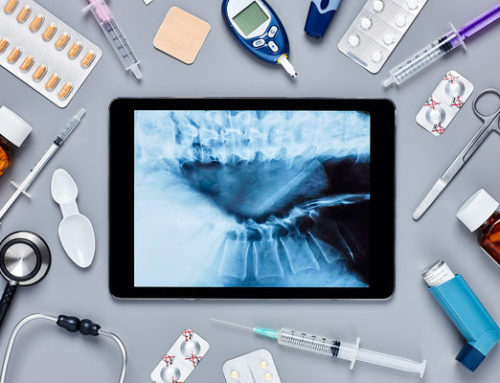Today, sutures and staples are the two options that surgeons typically use to close wounds after successful operations — it has been this way since time immemorial. The good news is, KitoTech Medical has decided to change things by offering a potentially better and less painful alternative, the microMend Skin Closure Device.
The microMend shares conceptual similarity with a typical bandage — it’s however made of a thin adhesive backing which features two arrays of tiny microstaples on either side. The device is placed one side at a time across a patient’s wound — the microstaples has to be inserted into the skin to align two edges of a wound. The highlight of the microMend is that it has the same holding strength as sutures and also flexible enough to conform to a patient’s movement. Moreover, the device can stay on a wound regardless of how long it takes to heal.
The idea was initially conceived by Dr. Ron Berenson, a biotech and medical device entrepreneur with over 25 years experience. While serving as an entrepreneur-in-residence at University of Washington’s hub, Berenson was inspired by the work of Dr. Marco Rolandi, a professor at the University of Washington. At that time, he was working on using tiny chitosan microneedles to heal wounds.
Dr. Ron Berenson says, “Although we ended up using metal rather than chitosan, Dr. Rolandi’s research got me thinking about the use of microneedles to close wounds.”
The company, KitoTech Medical was later incorporated in 2012, and in-depth research on the device began. Since then, KitoTech has finalized its design, found partners and rounded up initial clinical results with great results.
At the moment, the company is carrying out more clinical studies with a group of physicians from different fields with the goal of generating more data on how microMend compares to traditional sutures and staples.
The microMend confers many advantages to both patients and physicians. For starters, patients can benefit from its tensile strength since it can close two to three times faster than sutures. Moreover, the two-millimeter spacing between each micro staple provides an even distribution of tension which cuts down the risk of scarring and inflammation.
On the flip side, doctors will find this device to be a perfect alternative to sutures and staples thanks to its easy application. Moreover, there will be fewer return office visits since the device can be easily removed by patients. According to Berenson, the microMend is as easy and intuitive to put on as a bandage.
The device is projected to be used in dermatologic and plastic surgeries but can still work for a wide range of applications including emergency settings, or vascular, spinal, and laparoscopic surgeries.
Recently, KitoTech’s microMend was met with enthusiasm when it was introduced at the Annual Meeting of the American Society for Dermatologic Surgery, and that’s a great sign. Berenson says, ”Its simplicity is deceptive,” “In fact, the design and development process took years.” With the initial market indication, there’s no doubt that microMend will become a major player in the industry of wound closure products.



